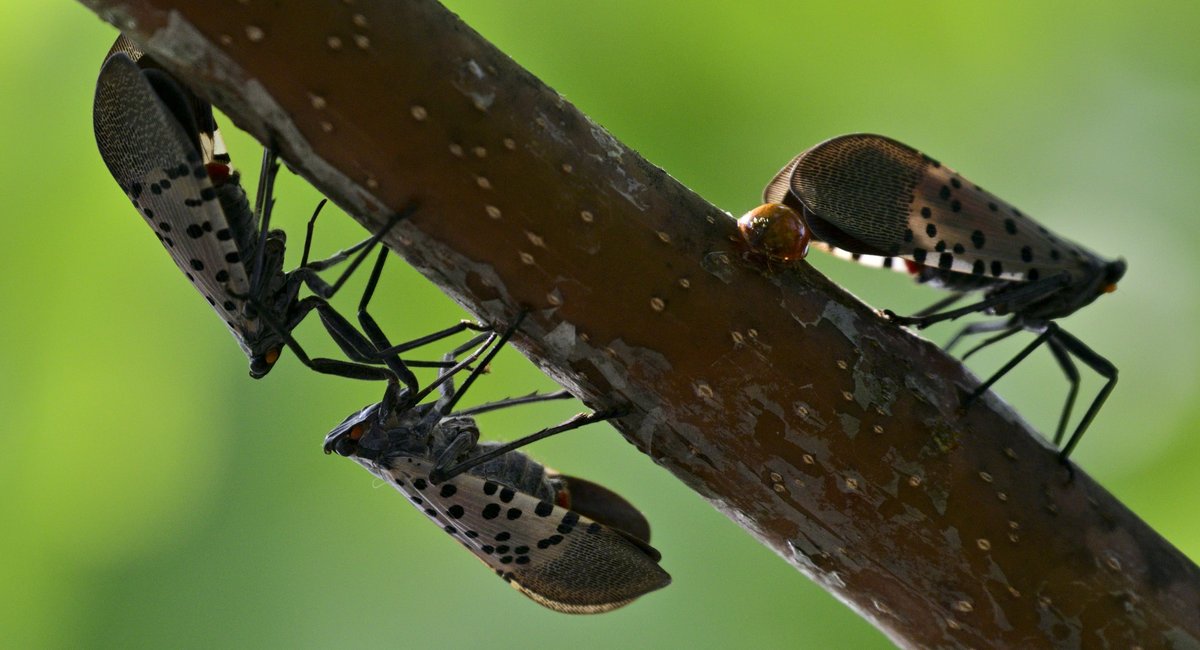The unmistakable red, polka-dotted spotted lanternflies were first sighted in New York in 2020.
A year later, our marching orders were clear: kill, kill, kill, no questions asked. In their third summer in the city, however, our collective efforts feel a tad futile.
Spotted lanternflies are living their best lives, scaling skyscraper, riding the subway, and lounging on the beach in seemingly more plentiful numbers than in the last two summers combined.
After all the hype, perhaps now is the right moment to pause, take stock of these spotted little creatures, and appreciate the fact that, according to some experts, they may not actually be as bad as we thought.
The doomsday predictions have come from the US Department of Agriculture, as well as local state offices. Researchers at Penn State sounded alarms in 2020, six years after the invasive little bug arrived in Pennsylvania — their first stop on US soil. They warned the bug could decimate agriculture production of all kinds, damage forests and timber industries, and wreak havoc on fruit production. The bug feeds on upwards of 70 different types of plants, and there was a possibility it might kill them in droves or dramatically reduce agricultural output for a host of crops.
But fast-forward two years and that’s not quite what happened, according to Julie Urban, a research associate professor at Penn State’s entomology department.
“It’s not as bad as we first thought,” she told Gothamist. “It’s really just a stressor. It doesn’t kill it.”
In many cases, like the travelers they are, spotted lanternflies will stay and feed for a while and move on, not staying long enough to have any lasting impact on most fruit trees. There were concerns that maple or apple trees would be affected if the lanternfly continues to push north. But it turns out they’re mostly okay, too, Urban said.
There were other worries that saplings could be killed, but the bugs don’t appear to be making their way deep into forests and researchers haven’t found any evidence that young trees are at heightened risk, according to Urban and Brian Eshenaur of Cornell’s Integrated Pest Management Program, which is tracking the infestations nationwide.
There were other concerns that the secondary impacts of the bugs might dampen agriculture production in other ways. When they stay for extended periods of time on a single tree — sucking in the sap with their tiny, straw-like proboscis — their sticky poop, or “honeydew,” can rain down on plants below, making them more susceptible to sooty mold, which can decrease photosynthesis and blunt their growth. But they don’t seem to like fruit trees enough to dwell long enough to have that kind of effect.
“[We have] no reports of honeydew impacting stone fruit production,” Urban said.
Eshenaur said that while they haven’t seen fruit production affected yet, it’s not impossible.
“I haven’t heard of that occurring in places where spotted lanternflies are prevalent, but I wouldn’t rule it out,” he said. “I would say it is a potential concern.”
The USDA lists a variety of trees that may be at risk, but the bugs can be fatal and cause other damaging impacts to two types of plants specifically: grapevines and the tree of heaven.
The latter is a leafy green tree that’s also an invasive species and can famously grow almost anywhere – it was the tree that managed to thrive in cracked pavement at the heart of the book “A Tree Grows in Brooklyn.”
